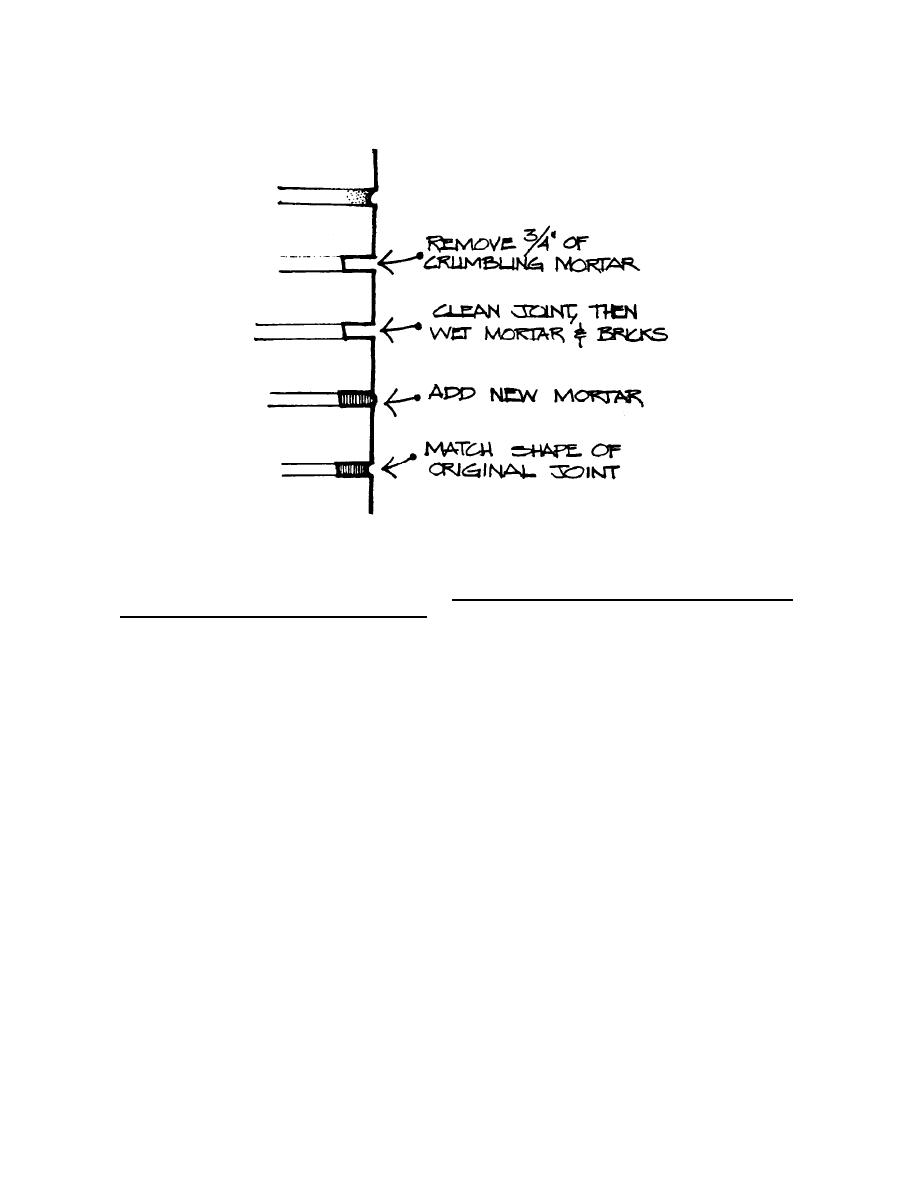

Custom Search
|
|

|
||
 HOW TO REPOINT
Figure 4-8.
How to Repoint.
(Illustration:
Blair Prentice, Rehab RiGht; How to Realize the
Full Value of Your Old House, Copyright 1978 & 1986, City of
Oakland, CA)
conditions, when water flows through masonry walls, different
parts of the building may settle at different rates, causing
uneven stress on the building parts. Flooding can also
damage other building materials, causing, for example, wood
to rot or iron masonry anchors to rust. Inappropriate
rehabilitation techniques such as sandblasting or repainting
with hard mortar can also create severe problems. Another
cause of masonry deterioration is differential expansion,
which takes place when one part of the building reacts to
changes in temperature more quickly than other parts do, or
when a building shifts because of weaknesses in the soil,
foundations, or structure. Damage from mechanical impact may
be caused by accidents (as when a truck backs into the corner
of a brick building), by wear or tear from normal use (like
heavy foot traffic on limestone steps), or by inappropriate
renovation techniques such as the use of power tools to cut
out old mortar joints. Chemical disintegration may result
from pollutants in the atmosphere (such as the sulfuric acid
in acid rain, which turns limestone into gypsum that washes
away) or from acids secreted by moss or lichens.
4-11
|
 |
|
 |
||